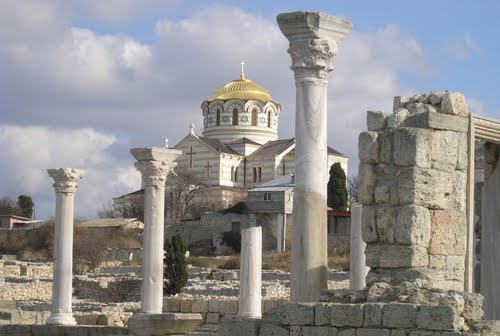Chersonesus (also rendered as Chersonese, Chersonesos), in medieval Greek contracted to Cherson is an ancient Greek colony founded approximately 2,500 years ago in the southwestern part of the Crimean Peninsula. The colony was established in the 6th century BC by settlers from Heraclea Pontica.
The ancient city is located on the shore of the Black Sea at the outskirts of Sevastopol on the Crimean Peninsula, where it is referred to as Khersones. It has been nicknamed the "Ukrainian Pompeii" and "Russian Troy". The site is now part of the National Historical-Archeological Museum-Zapovednik of the Ukrainian Khersones Tavriysky. The name "Chersonesos" in Greek means "peninsula", and aptly describes the site on which the colony was established. It should not be confused with the Tauric Chersonese, the name often applied to the whole of the southern Crimea.
During much of the classical period Chersonesus was a democracy ruled by a group of elected archons and a council called the Demiurgi. As time passed the government grew more oligarchic, with power concentrated in the hands of the archons. A form of oath sworn by all the citizens since the 3rd century BC has survived to the present day. In 2013, Chersonesus was listed as a World Heritage Site.


















